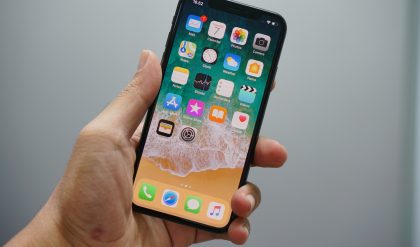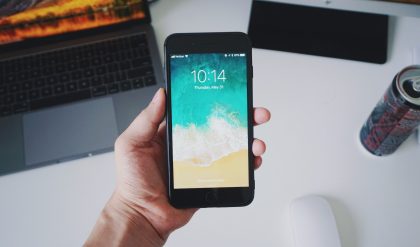
Most devices today run on proprietary operating systems with a set of rules and limitations set by manufacturers and operating system developers.
As a result of these constraints, tech enthusiasts and other users have looked at ways to push the boundaries of what their devices can do. The result is practices like jailbreaking and rooting.
To many, jailbreak and rooting as perceived as synonymous but the fact is that they are not the same thing. They are actually two distinct methods used to unlock the full potential of our smartphones, tablets, and other devices. To fully take advantage of what these two have to offer, we need to understand what they are and what the differences between them are.
In this comprehensive article, we will therefore dive deeper into the difference between Jailbreak and Rooting. So without further ado, let’s begin.
What is Jailbreak?
Let’s start with the perhaps most well-known: jailbreaking. Jailbreaking is the process of removing software restrictions imposed by the manufacturer or operating system provider, especially on iOS devices like iPhones and iPads.
Jailbreaking gives users access to the device’s file system and allows them to install applications and make customizations that would typically not be possible within Apple’s locked ecosystem.
It enables users to install third-party apps, customize the user interface, and even modify system settings that are otherwise off-limits.
Jailbreaking is predominantly associated with iOS devices, such as iPhones and iPads. The main reason for this is that Android devices offer a more open ecosystem by default. For that reason, there is more to break free from within the locked iOS operating system, thus making it more intriguing to jailbreak their Apple devices.
Reasons People Jailbreak Their Devices: There are several reasons why people choose to jailbreak their devices. Some people do it to unlock features not officially supported by Apple for example custom themes, enhanced multitasking capabilities, or advanced system tweaks. Others jailbreak their devices to install applications that are not available on the Apple App Store.
Jailbreaking offers increased flexibility but it’s important to point out that it is not without its risks. Jailbreaking can actually expose your device to security vulnerabilities and potentially lead to instability or malfunctions. In addition, jailbreaking may void your device’s warranty as it goes against Apple’s terms of service. Legally, it’s a gray area, with implications varying by region but generally, it’s legal.
What is Rooting?
Now that we’ve rorted out jailbreaking, it’s time to look closer at rooting in order to understand the distinctions between them.
While similar to jailbreaking, rooting relates primarily to Android devices and involves a process that gives users improved privileges. Essentially, it allows users to become the “root” user of the device, giving them full control over the Android operating system.
Rooting is the Android equivalent of jailbreaking. The purpose remains the same as jailbreaking to give users the ability to unlock the true potential of their device. It means obtaining superuser or root access rights, which are often reserved for the system’s core functions. Root users have the ability to modify the Android operating system, install custom firmware, and gain unfettered access to the device’s file system.
Devices and Operating Systems where Rooting is Relevant: Rooting is most relevant for Android devices. Unlike iOS, Android has an inherently open ecosystem that allows users to sideload apps, customize their devices, and even replace the entire operating system with a custom ROM. Nevertheless, rooting is quite popular among Android enthusiasts who want to take the customization of their device to the next level.
There are several reasons why people want to root their Android devices. Some do it to remove bloatware which are pre-installed apps that cannot be uninstalled without root access. Others choose to do it to tweak system settings, improve performance, or install custom themes. By rooting an Android device, it also enables the installation of applications that require root permissions which gives access to advanced functions like ad-blocking or firewall control.
Similar to jailbreaking, Rooting does come with a few risks. There is a potential risk of granting root access as it can expose your device to security vulnerabilities or instability. This is particularly true if it is not performed correctly. It’s also important to note that rooting generally voids the warranty from the device manufacturer which is why it can be good to think twice before rooting a new or expensive device.
Key Differences Between Jailbreak and Rooting
Now that we have understood both jailbreaking and rooting, it’s time to look closer at the distinctive features that set these two practices apart.
Technical Process:
- Jailbreaking Process: Jailbreaking primarily revolves around finding and exploiting vulnerabilities within the iOS operating system. This often requires the use of specialized tools or software exploits to gain root access.
- Rooting Process: Rooting, on the other hand, is more straightforward on Android devices. It typically involves unlocking the bootloader, which allows users to install custom recovery software and subsequently gain root access. The process can vary depending on the device and manufacturer.
Devices and Platforms:
- iOS vs. Android: The main distinction lies in the devices and operating systems involved. Jailbreaking is associated with iOS devices like iPhones and iPads, whereas rooting is specific to the Android ecosystem.
- Other Platforms: While iOS and Android dominate the market, it’s important to note that other platforms like Windows Phone or BlackBerry OS have their own customization methods but are less prevalent.
Purpose and Features:
- Jailbreaking Objectives: Jailbreaking primarily focuses on circumventing Apple’s restrictions, enabling the installation of unofficial apps and customizations. It’s often used to unlock hidden iOS features, bypass carrier limitations, or simply break free from Apple’s ecosystem.
- Rooting Objectives: Rooting, on the other hand, empowers Android users to customize their devices extensively. It allows for the removal of bloatware, installation of custom ROMs, and in-depth system tweaks, catering to users seeking complete control over their Android experience.
App Store and Ecosystem Access:
- App Store Restrictions: With jailbreaking, you can access alternative app stores and install apps not approved by Apple, extending their app choices beyond the Apple App Store.
- Custom App Installations: Rooting, in contrast, provides the capability to install apps that require root permissions, opening doors to advanced applications like Titanium Backup or AdAway. However, Android users can typically sideload apps without rooting.
Security and Legal Implications:
- Vulnerabilities: Both jailbreaking and rooting introduce security vulnerabilities if not performed correctly, potentially compromising the stability and safety of the device.
- Legal Aspects: Both practices are seen as a legal gray area. Jailbreaking may void your iOS device warranty and potentially infringe on Apple’s user agreements. Rooting can void Android device warranties. Rooting and jailbreaking is generally not illegal however.
Pros and Cons of Jailbreaking and Rooting
Now that we have a good understanding of the fundamental differences between jailbreaking and rooting, let’s look closer at the pros and cons associated with each practice. Both approaches offer benefits, but they also have drawbacks that need to be considered.
Advantages:
1. Customization:
- Jailbreaking: For iOS users, jailbreaking is a gateway to extensive customization. You can personalize your device’s appearance, user interface, and functionality to suit your preferences.
- Rooting: Android users enjoy similar customization freedom, with the ability to install custom ROMs, tweak system settings, and explore a wide range of themes and modifications.
2. Access to Unapproved Apps:
- Jailbreaking: It allows iOS users to install apps from third-party sources, expanding their app choices beyond what the official App Store offers.
- Rooting: Rooted Android users can install apps that require root permissions, unlocking a world of advanced applications and tools not available to unrooted devices.
3. Removing Restrictions:
- Jailbreaking: By breaking free from Apple’s restrictions, you can unlock hidden iOS features, remove limitations imposed by carriers, and gain control over your device’s behavior.
- Rooting: Rooting gives Android users the ability to remove bloatware and system apps, potentially improving device performance and freeing up storage space.
Disadvantages:
1. Security Risks:
- Jailbreaking: Exploiting vulnerabilities during the jailbreaking process can expose your device to malware or other security threats, potentially compromising your data and privacy.
- Rooting: Rooted Android devices are at a higher risk of malware infection, especially when installing apps from unofficial sources. Additionally, system modifications can destabilize the device.
2. Warranty Voiding:
- Jailbreaking: Jailbreaking an iOS device is likely to void its warranty, as it violates Apple’s terms of service. If you encounter hardware issues, you may be out of luck.
- Rooting: Rooting also typically voids the warranty of Android devices, although some manufacturers are more lenient than others. Be prepared for potential warranty-related hurdles.
3. Legal Consequences:
- Jailbreaking: While jailbreaking is often tolerated, it exists in a legal gray area. Apple has opposed it in the past, and it may infringe on user agreements or local laws in some cases.
- Rooting: Similar to jailbreaking, rooting can also be legally problematic. It may run afoul of device manufacturer policies, and the legality can vary depending on your jurisdiction.
Risks and Precautions
Before you root or jailbreak, it’s important to be aware of the potential risks involved. Let’s have a closer look at these risks and discuss some precautions you can take to minimize the risk.
Security Risks:
1. Malware and Viruses:
- Jailbreaking: When jailbreaking iOS devices, you’re essentially opening a door to potential malware and viruses. The process often involves downloading and running unverified software from unofficial sources.
- Rooting: Rooted Android devices can be susceptible to malware, especially if you sideload apps from questionable sources. The elevated permissions granted during rooting can make your device more vulnerable.
Data Breaches:
- Jailbreaking: Gaining root access to your device can expose your personal data to malicious actors. Always exercise caution when installing apps or tweaks, as some may be designed to steal your information.
- Rooting: Rooting your Android device might lead to data breaches if you’re not careful about the apps you install or the permissions you grant to them.
Legal Considerations:
1. Copyright Infringement:
- Jailbreaking: Some aspects of jailbreaking, particularly the installation of pirated apps, can infringe on copyright laws, potentially leading to legal repercussions.
- Rooting: Similarly, rooted Android devices can be used for piracy or copyright infringement, putting you at risk of legal consequences.
2. Warranty Voiding:
- Jailbreaking: Jailbreaking iOS devices typically voids their warranties, meaning you may have to bear the full cost of repairs or replacements for any hardware issues.
- Rooting: Rooting Android devices can also void warranties, so be prepared to take on repair costs if needed.
How to Minimize Risks:
1. Backup Your Data:
Regularly back up your device’s data before undertaking any customization. This ensures you can recover your information in case of issues.
2. Use Reputable Sources:
When installing apps or customizations, stick to trusted sources and app stores to minimize the risk of malware.
3. Stay Informed:
Keep yourself informed about the latest security threats and best practices for securing your jailbroken or rooted device.
4. Consider Alternative Customization Options:
Explore legitimate customization options that don’t involve jailbreaking or rooting, as they often provide a safer and more stable experience.
5. Understand the Legal Implications:
Familiarize yourself with the legal implications of jailbreaking or rooting in your jurisdiction and make informed decisions accordingly.
Alternatives to Jailbreaking and Rooting
While jailbreaking and rooting offer enhanced device customization, they do have risks and potential downsides. Therefore, if you want to personalize your device without using any of these options, there are a few alternatives that provide customization options while maintaining device security and the warranty.
Legitimate Customization Options:
1. App Permissions and Settings:
Most modern smartphones, including iOS and Android devices, offer extensive customization through their settings and permissions systems. Take time to explore these options to tailor your device experience.
2. App Launchers and Widgets:
Both Android and iOS allow users to change their device’s look and feel through app launchers and widgets. These can provide a fresh interface without altering the core system.
3. Third-Party Apps:
Both app stores offer a vast selection of third-party apps that can enhance your device’s functionality. Carefully curated apps can mimic some of the customization features of jailbreaking or rooting without the associated risks.
Jailbreaking and Rooting Without Full Commitment:
1. Non-Permanent Jailbreaks:
Some jailbreaking methods offer non-permanent solutions, allowing you to enjoy customized features temporarily without voiding your warranty. However, be cautious, as these may still pose security risks.
2. Custom ROMs and Recovery:
For Android users, custom ROMs and recoveries can provide a middle ground. These allow for significant customization without full rooting. However, they may still void your warranty.
Manufacturer-Supported Customization:
1. Manufacturer Skins:
Many Android devices come with manufacturer-specific Android skins (e.g., Samsung’s One UI, Xiaomi’s MIUI). These skins offer a range of customization options without requiring rooting.
2. Device-Specific Features:
Device manufacturers often include unique features and customization options within their devices, enabling users to personalize their experience while maintaining warranty coverage.







